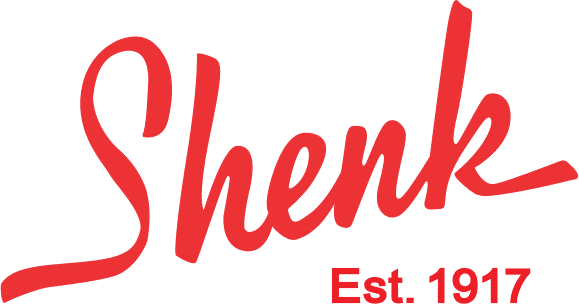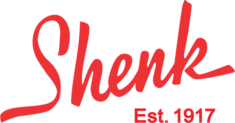
Harrisburg Screen Printing Services
Are you looking for a unique way to promote your Harrisburg area business? Shenk can help!
OUR HARRISBURG CUSTOMERS
Custom Harrisburg Screen Printing
We offer customized screen printing for organizations looking for promotional products to grow business or raise awareness for a cause. Our team will work with you to create a design that meets your needs and helps you achieve the desired outcome.
Contact us today to get started!
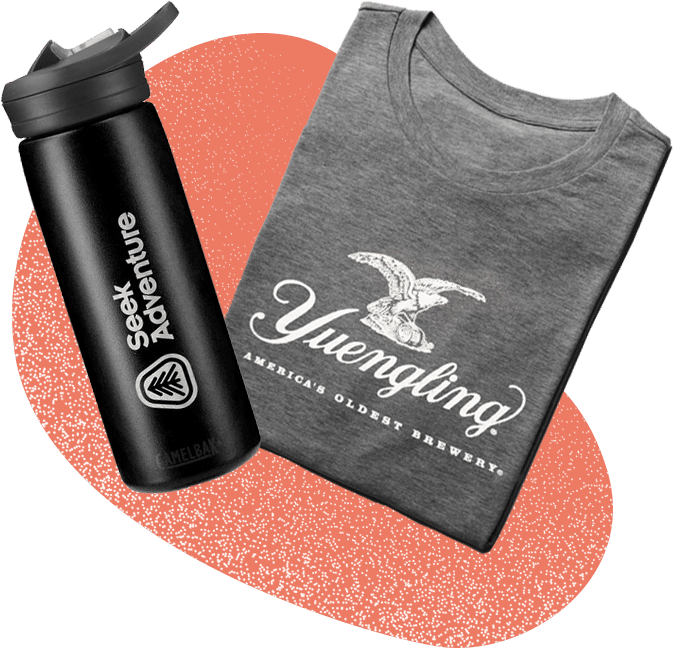
Why Shenk?
The Shenk Company is one of the most trusted businesses in Harrisburg embroidery services and more. We have been providing outstanding service for over 100 years. We know how important a quality product can impact your organization! When you partner with Shenk, we promise to work with you to bring your designs and ideas to life.
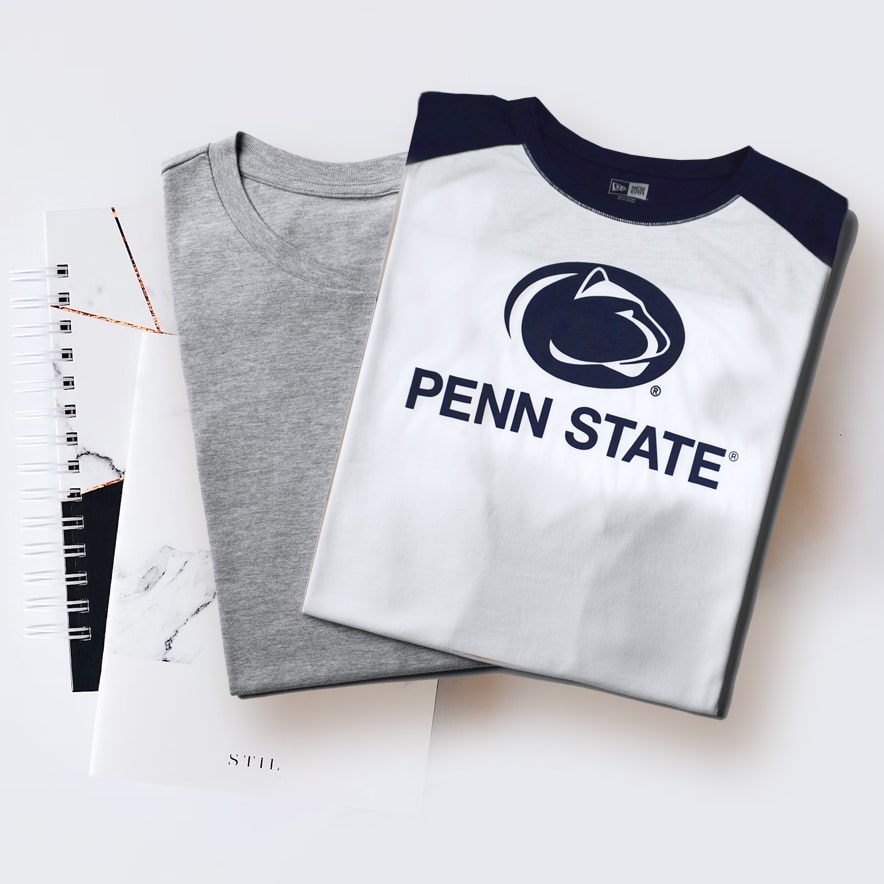
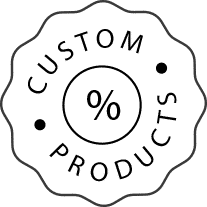
Custom Screen Printing
Custom screen printing is a great way to create quality promotional products. Unlike off-the-shelf items, screen printing for apparel and more allows you to design your products, ensuring that they are precisely what you want. And because the items are made to order, you always know that you’re getting the best quality possible. Additionally, custom screen printing is a cost-effective way to promote your business. Working with a quality print shop allows you to get the exact number of items you need without paying for costly overruns. So whether you’re looking for a unique way to promote your online business or want to create quality made-to-order products, screen printing is a great option.
Wide Variety of Colors and Materials
Front or Rear Printing
Short Run and Long Run Options
What Is Screen Printing?
Screen printing is a type of printing where a mesh is used to transfer ink onto a substrate, except in areas protected by the stencil. A frame holds a tightly woven fabric called a “screen,” which has a coating of lacquer or photo-emulsion on one side. A squeegee is moved across the screen to fill the open mesh with ink, and then the screen is passed over the substrate. The ink will appear on the substrate where the resist material did not block it.
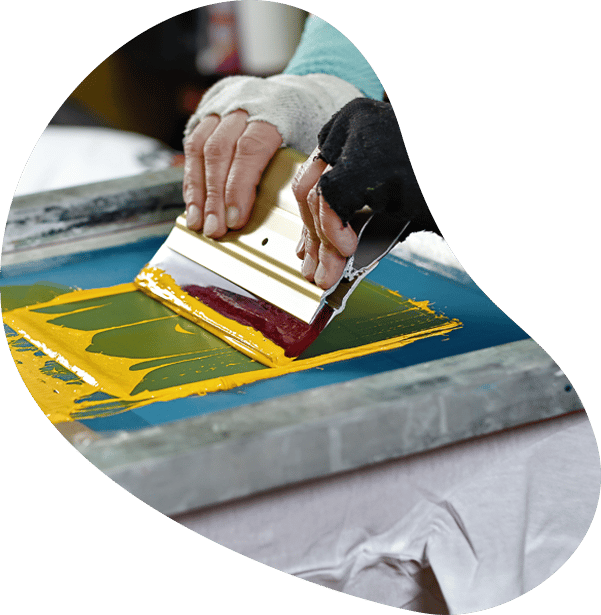
This type of printing has been used for many years, and several different printing presses are available today. Creating bulk garments and accessories using screen printing is an ideal technique because it can also be done on darker fabrics. The fact that the printer has many colors to choose from makes this process even better, with ample opportunity provided when designing graphics or text into these products.
The Printing Process
Screen printing is a popular form of commercial print because it can produce intricate designs with the help of a unique light-reactive emulsion. There are many different methods, but they all involve applying ink onto an exposed surface area via pressing tools called “stencils.”
1.
Creating the Design
The printer takes the design they want to create on their finished product and prints it onto a transparent acetate film. This will be used for creating stencils!
2.
Preparing the Screen
Next, the printer will choose a mesh screen to suit the complexity of your design and texture. The material is coated with light-reactive emulsion that hardens when developed under bright lights.
3.
Making the Stencil
After the screen has been exposed for a set time, any unhardened emulsion is carefully rinsed away. This leaves an accurate imprint of your design on top so that ink can flow through easily. The printer will make touch-ups where necessary to ensure everything comes out perfect every single time–and now you have a stencil.
4.
Screen Printing the Product
The screen is placed on top of the printing press. The printed item or garment will go underneath this onto a flat surface prepared beforehand with ink.
Some modern commercial printers use rotary carousels where multiple screens can be activated simultaneously; these allow designers who need more than one color per layer during the creative process – like those producing multicolored prints-to do their work quickly without having mixed up any batches along the way.
5.
Checking and Washing Your Product
Once the printed product has passed through a dryer, this process “cures” the ink. It will be checked and washed thoroughly to remove any residue. The final piece is then ready for its new owner!
Overview of Our Screen Printing Equipment
Screen printers must have everything they want to ensure that the print job turns out smoothly. Below you can read about the pieces of equipment involved in this process.
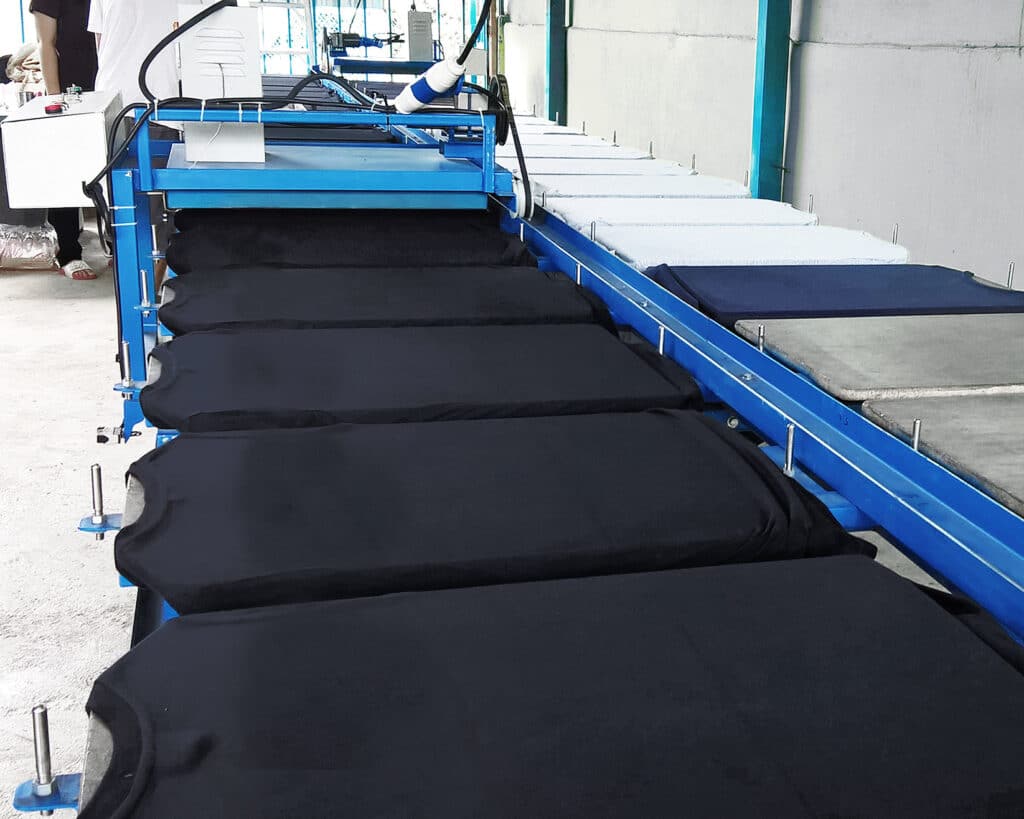
Screen Printing Press
Printing with a mesh screen and squeegee is one way to make a print. However, most printers prefer the press as they can print multiple items at once using this method. This allows them greater efficiency because swapping out the item they are printing on is easy.
There are three different types of presses: manual, semi-automatic and automatic. A manual press is operated by hand, so it’s pretty labor-intensive to use this type. The second option is semi-automated, where there’s some machine work but still requires human intervention whenever the pressed items need to be changed. The third type is the automated press, which needs little help from the worker.
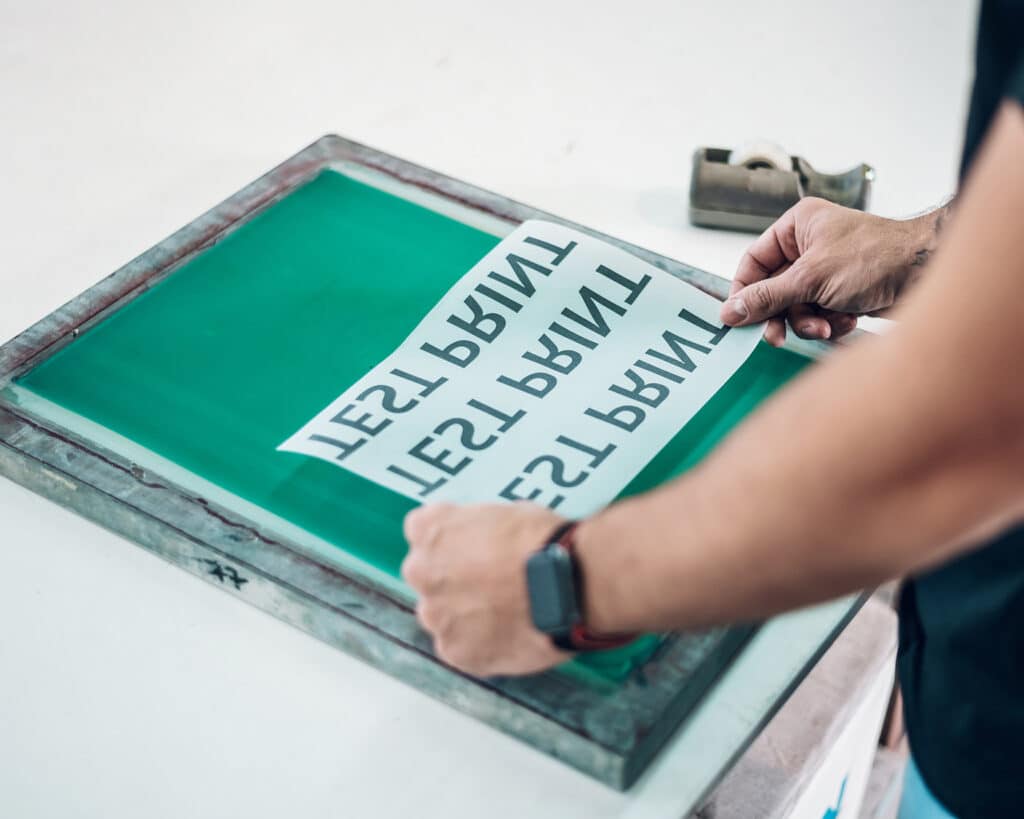
Silk Screen
Silkscreen printing is a process where an artist uses tightly-stretched mesh or screens to leave designs on canvas. The first step of this technique requires mounting the silkscreens over your chosen fabric, with separate pieces for each color.
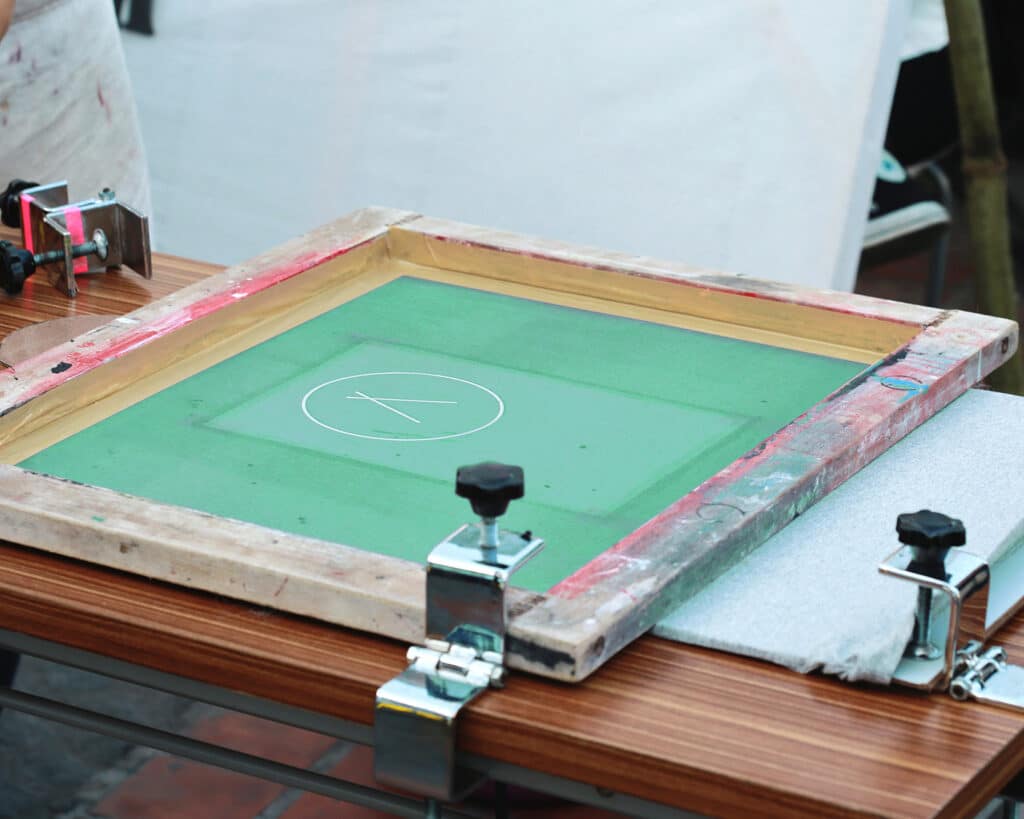
Frame
Different frames are used in screen printing, including wood and aluminum. The wooden option is more budget-conscious. However, the aluminum frame is more durable in the long run and is easier and lighter on the printer.

Washing Equipment
Reusing a screen for printing must first be washed and cleaned. The process can vary depending on the type of printer or printworks facility- some use large tubs filled with specialized fluids that remove emulsion quickly. Others hose off their screens in water after each job is finished to keep them clean between uses.
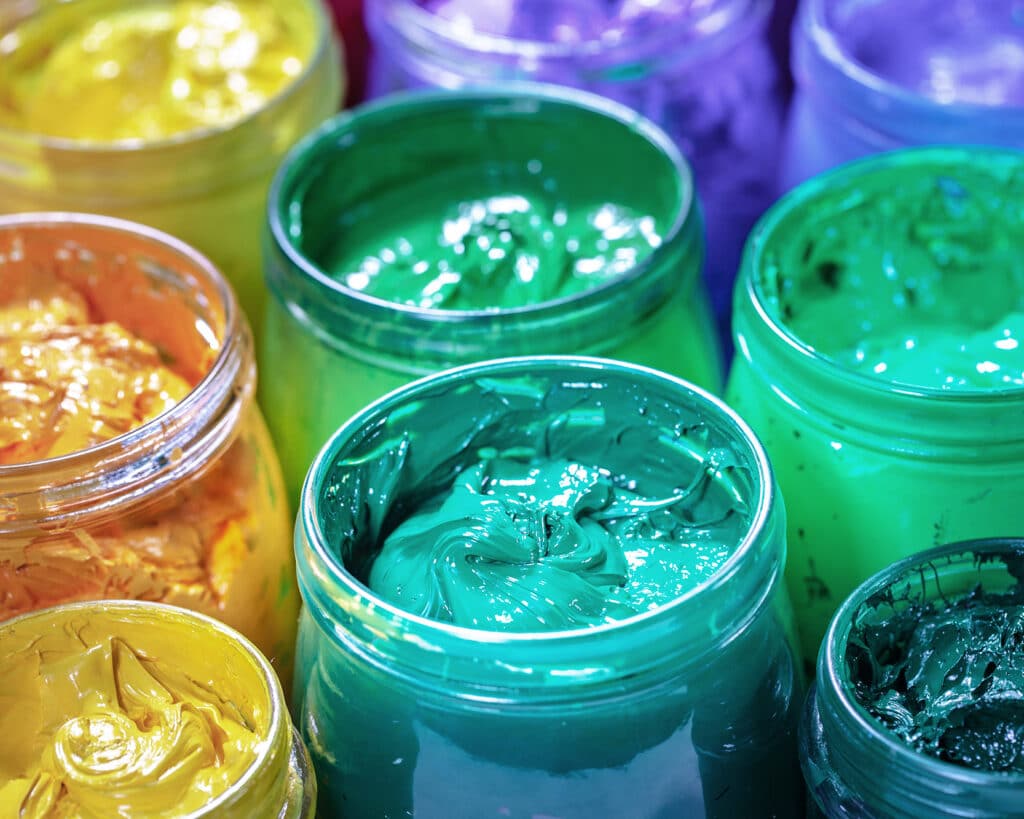
Inks
How do you get that perfect, personal touch on your print? The answer lies in the type of ink used. There are many kinds to choose from, each with its unique purpose and effect!
Puff ink is a fun alternative as it expands to create a raised surface. Glitter in ink adds a touch of sparkle and texturizing ink adds depth. The printers will determine the type of material the ink will be printed on, as certain inks will work better than others.
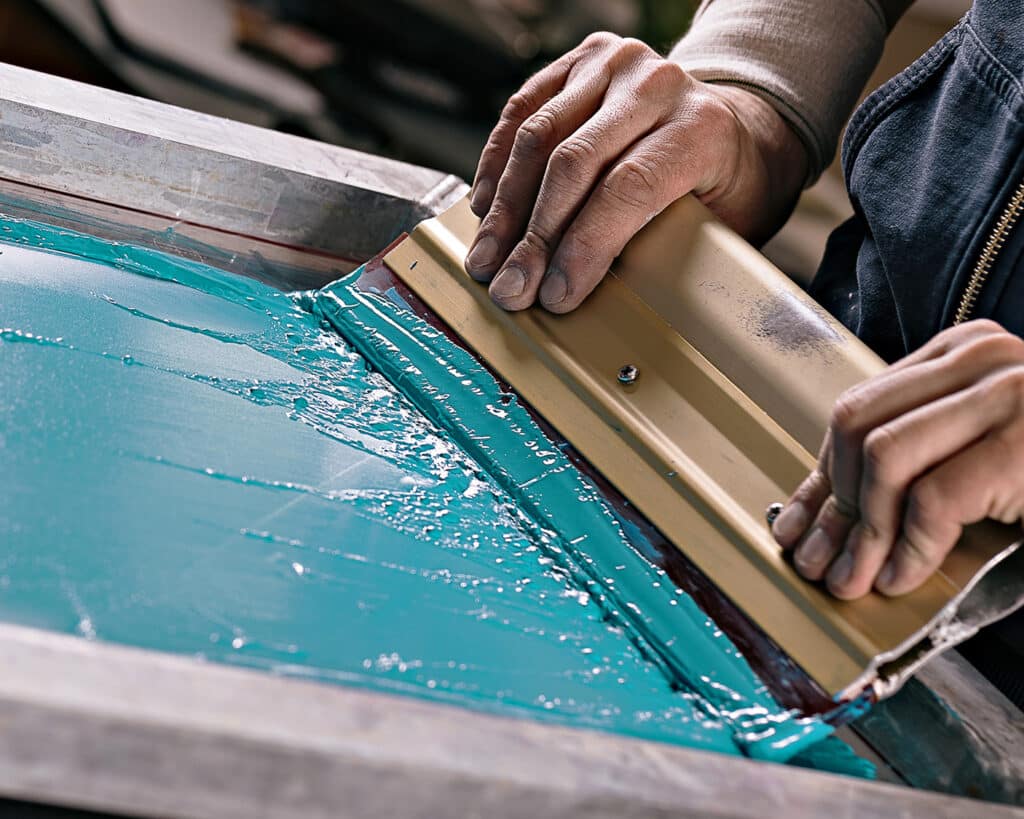
Squeegee
Digital Screen Printing
Digital printing is an excellent choice for those who need to print intricate designs or very colorful textiles. This technique uses specialized fabric printers, which work just like inkjet computers and make it possible to transfer an image onto the material without any stencils!
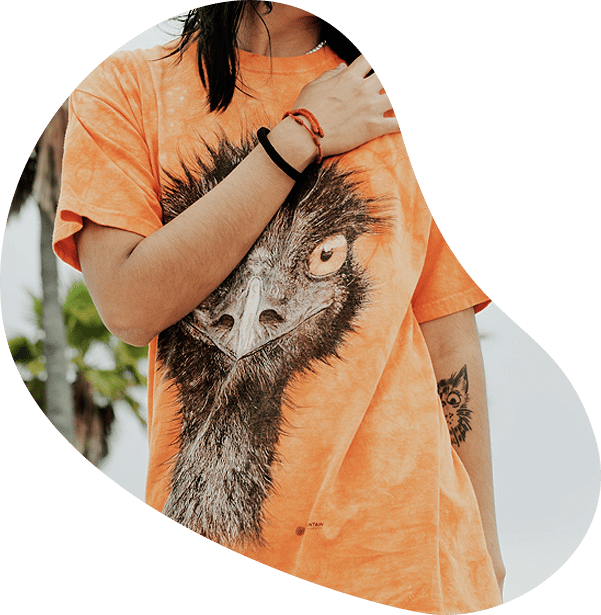
Screen Printing vs Other Printing Methods
Screen printing is a popular way to print designs on shirts, hats, and other fabrics. But did you know that there are other methods available? Each method has advantages and disadvantages, so choosing the right one for your needs is essential.
Sublimation vs Screen Printing
With dye sublimation, you can have a unique design on every shirt. It’s perfect for small projects or one-of-type creations because of its high cost and time consumption. It is not practical for bulk printing, but it works excellently when designing individual shirts or products with different styles!
DTG vs Screen Printing
DTG (direct to garment) printing is a digital print that uses an individualized printer to transfer images directly onto textiles. The advantages of digital printing over screen-printing are that it requires less setup, is more cost-effective for small batches or single items, and has a computerized image rather than stencils. It also allows you to create highly detailed designs with photographs as opposed to the rigid limitations imposed by traditional methods such as stenciling, which can only produce solid colors without any detail.
Heat Press vs Screen Printing
Heat transfer printing is an easy and cost-effective way to get personalized items. It can be used for small batches, like shoes, bags, or hats, that require detailed designs because of their awkward shape. The chosen design is printed on heat-reactive transfer paper, and heat is used to transfer the image to the surface underneath. The one downside to heat press printing or heat transfer is the quality may not be up to industry standards if high-quality materials are not used.
Vinyl vs Screen Printing
When choosing between screen printing and vinyl, you will want to consider four factors that will help you determine which one is best for you.
- Fading: Screen-printing produces shirts that can withstand wear and tear more than vinyl because they are not as susceptible to fading and cracking.
- Details: Screen printing is the way to go regarding intricate design features and detailed printing. The process involves creating separate screens, which means that no matter how much you try, there will always be something lost in translation if done on vinyl t-shirt service!
- Quantity: If you are doing a small run, between 1-12 items, vinyl would be an appropriate choice because it takes less time to set up. However, screen printing is your best option if you are in the market for bulk orders, as the design does not change from shirt to shirt.
- Color: If you’re looking for vibrant colors, screen printing is your best option. A more extensive range of color options and the ability to create gradients in order not to have them run into each other make this type a great choice regarding deciding how much detail goes into designing something visual.
Screen Printing Services Vs DIY Projects
Are you considering screen printing your designs at home? It can be a fun and creative project, but is it worth the hassle and cost? If you need a single, simple product and don’t care too much about the quality, a DIY screen printing project may be for you. If not, screen printing services can provide a professional product that’s more affordable and less time-consuming than doing it yourself.
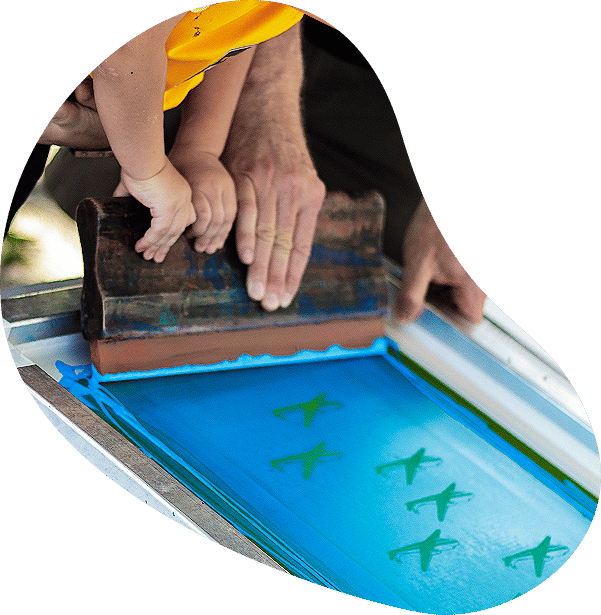
A Brief History of Screen Printing
The first screen printing was introduced in China during the Song Dynasty (969-1279AD), and other countries like Japan have since adopted it. Screen-printing processes are more advanced than traditional methods of printmaking because they can create intricate designs that would otherwise not be possible with just ink on paper or cotton fabric!
The use of screen printing in the West was introduced from Asia sometime around the 18th century. Still, it did not gain significant acceptance until silk mesh became more available and profitable.
Popular Screen Printed Products
Screen printing is a process that has been used for centuries to create images and designs on textiles. While it was mainly used for fabric, screen printing is now used to create various products, including t-shirts, hats, phone cases, and more. In fact, screen printing is so popular that countless businesses specialize in creating these products. Screen-printed products are a great option if you want a unique gift or something to promote your business.
T-Shirts
Long-Sleeved T-Shirts
Tank Tops
Sweatshirts
Sweatpants
Hats
Uniforms
Bags and Backpacks
Umbrellas
Blankets
Towels
Other Products
Businesses That Benefit From Screen Printing in Harrisburg
Local Harrisburg embroidery service businesses and organizations will see a positive impact when choosing to promote and advertise their services using screen printing. When you partner with a local screen printing company, you are taking your advertising to the next level and creating brand awareness in the Harrisburg region and beyond.
Landscaping
Education
Nonprofits and Fundraising
Restaurants
Bars
Bands
Sports
Price Factors for Our Printing Services
The prices of products and services vary depending on the type, size, or design. If you’re looking for something specific, it is best to contact the printing company before making any decisions about your purchase, so you have all the information upfront.
Type of Product
Screen printing is a relatively simple process, but certain items may cost more or less due to the work that goes into printing them. Remember that the darker the background of the object you are printing on, the more ink it requires to ensure coverage and the more work it takes the printer to complete the job. In short, a white shirt is cheaper to print, and a black one is more expensive.
Quantity
You might be surprised that buying in bulk can save you money in the long run. This quantity discount allows you to purchase a larger quantity of an item for a lower price per unit. Not only does this allow for little to no waste, but it can also lead to significant savings over time.
Location
Screen printing can be done on the front or back of the garment, but you can also create a unique look by printing on the sleeves as well. The amount of printing on various locations will be a factor for final pricing.
Number of Colors
If you’re looking for a shirt with multiple designs and colors, it will be more expensive than one with just one color. The printer will separate each piece of artwork so they can get precisely what is needed on the garment, which increases costs significantly in terms of materials plus any required additional labor.
Due Date
If your order requires a quick turnaround, you may see an increase in cost. This is because the orders are prioritized in our production queue. This means working extended hours for printing teams to meet your tight deadline.
Frequently Asked Questions About Screen Printing
If you take good care of your screen-printed shirt, it will last the garment’s life! Fading is typical and can happen if wear isn’t adequately cared for.
Screen printing provides high-quality prints on various materials with excellent results. It’s worth the extra cost because it produces such great-looking pieces, and you can’t go wrong using a local screen printing company to promote your organization.
Ready to Bring Your Vision to Life?
We specialize in creating high-quality screen printing and embroidery tailored to your unique needs. Whether it’s custom apparel, promotional items, or team uniforms, we’re here to help make it happen.
Fill out the form to get your free quote, and one of our friendly experts will be in touch promptly to discuss your project. Let us show you why businesses and organizations across Pennsylvania trust Shenk Company for exceptional service and fast turnaround times.
Get started by filling out this form, and a member of our team will be in touch!
